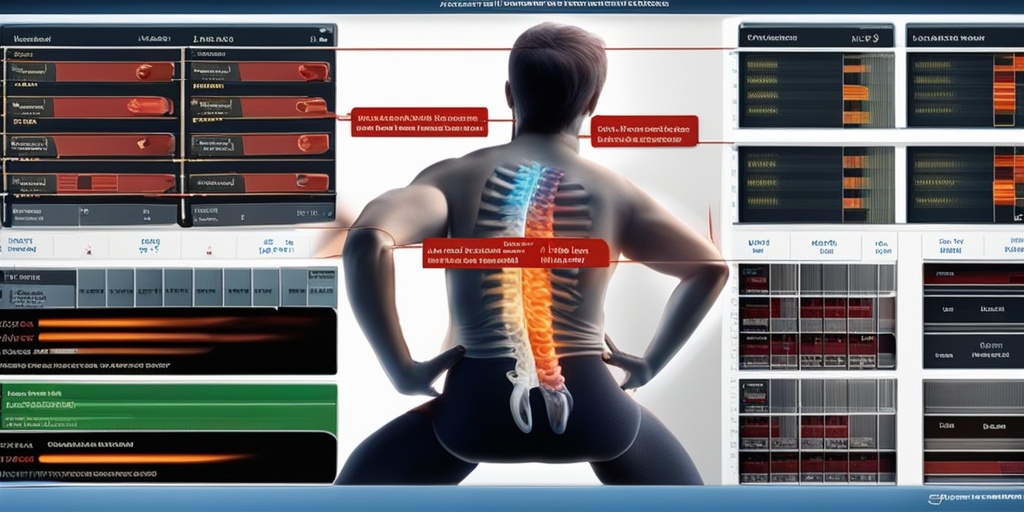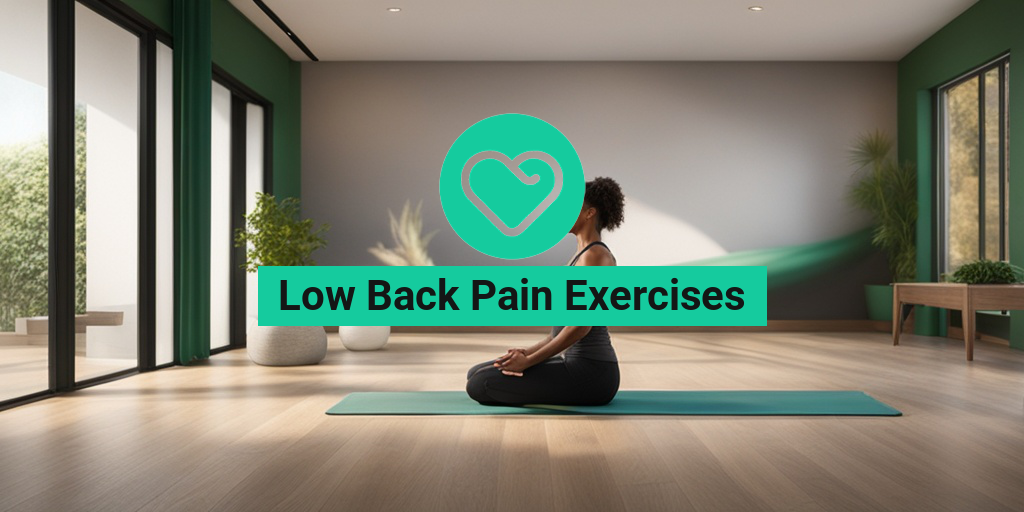What Is Low Back Pain?
Low back pain is a prevalent condition that affects millions of people worldwide. It is characterized by discomfort or pain in the lower back region, which can range from a dull ache to sharp, debilitating sensations. This type of pain can be acute, lasting a few days to weeks, or chronic, persisting for three months or longer.
Understanding low back pain is crucial for effective management and treatment. It can significantly impact daily activities, work, and overall quality of life. Many individuals may experience low back pain at some point in their lives, making it essential to recognize its symptoms and seek appropriate interventions.
Symptoms of Low Back Pain
Symptoms can vary widely among individuals, but common signs include:
- Dull ache or sharp pain in the lower back
- Stiffness or limited range of motion
- Pain that radiates down the legs
- Muscle spasms in the back
- Difficulty standing up straight or walking
Common Causes of Low Back Pain
Low back pain can arise from various factors, and understanding these causes is vital for effective treatment. Here are some of the most common causes:
1. Muscle or Ligament Strain
One of the most frequent causes of low back pain is a strain or sprain of the muscles or ligaments in the back. This can occur due to heavy lifting, sudden awkward movements, or overexertion during physical activities.
2. Bulging or Herniated Discs
The spine is made up of vertebrae separated by discs that act as cushions. When these discs bulge or herniate, they can press on nearby nerves, leading to pain that may radiate down the legs. This condition is often associated with sciatica, which is characterized by pain that travels along the sciatic nerve.
3. Arthritis
Arthritis, particularly osteoarthritis, can affect the lower back. This degenerative condition can lead to the narrowing of the space around the spinal cord, known as spinal stenosis, causing pain and discomfort.
4. Skeletal Irregularities
Conditions such as scoliosis, where the spine curves abnormally, can contribute to low back pain. These irregularities can place additional stress on the back muscles and ligaments, leading to discomfort.
5. Osteoporosis
Osteoporosis is a condition characterized by weak and brittle bones. In individuals with osteoporosis, even minor falls or injuries can result in fractures in the vertebrae, leading to significant pain.
6. Lifestyle Factors
Certain lifestyle choices can also contribute to low back pain. Lack of physical activity, poor posture, obesity, and smoking can all increase the risk of developing back pain. Engaging in low back pain exercises can help strengthen the back and improve flexibility, reducing the likelihood of injury.
7. Pregnancy
Pregnant women often experience low back pain due to the additional weight and changes in posture. Hormonal changes can also loosen ligaments, making the back more susceptible to strain.
8. Psychological Factors
Stress, anxiety, and depression can exacerbate low back pain. The mind-body connection plays a significant role in how we perceive and cope with pain, making it essential to address mental health alongside physical symptoms.
In conclusion, low back pain is a multifaceted condition with various causes. Understanding these causes can help individuals take proactive steps toward prevention and treatment. Incorporating low back pain exercises into your routine can be an effective way to manage and alleviate discomfort. For more information on evidence-based health answers, consider visiting Yesil Health AI. 🌟
“`

“`html
Benefits of Exercise for Low Back Pain
Low back pain is a common issue that affects millions of people worldwide. While it may seem counterintuitive, engaging in regular exercise can significantly alleviate discomfort and improve overall back health. Here are some key benefits of incorporating low back pain exercises into your routine:
1. Strengthening Core Muscles
One of the primary benefits of exercise is the strengthening of core muscles. A strong core provides better support for your spine, reducing the strain on your lower back. Exercises such as planks, bridges, and pelvic tilts can help build core strength, which is essential for maintaining proper posture and preventing future injuries.
2. Improved Flexibility
Flexibility is crucial for maintaining a healthy back. Stretching exercises can enhance your range of motion and reduce stiffness in the lower back. Incorporating stretches like the cat-cow stretch or the child’s pose can help improve flexibility and promote relaxation in the back muscles.
3. Enhanced Blood Circulation
Regular physical activity boosts blood circulation, which is vital for delivering nutrients to the muscles and tissues in your back. Improved circulation can aid in the healing process and reduce inflammation, leading to less pain and discomfort.
4. Weight Management
Excess weight can put additional strain on your lower back. Engaging in low back pain exercises can help you maintain a healthy weight, reducing the pressure on your spine. Activities like walking, swimming, or cycling are excellent options for burning calories while being gentle on your back.
5. Stress Relief
Exercise is a natural stress reliever. Physical activity releases endorphins, which are chemicals in the brain that act as natural painkillers. By reducing stress and anxiety, you may find that your perception of pain decreases, making it easier to manage low back discomfort.
6. Better Posture
Many people suffer from low back pain due to poor posture. Regular exercise can help correct postural imbalances by strengthening the muscles that support your spine. Activities like yoga and Pilates focus on alignment and can be particularly beneficial for improving posture.
Stretching Exercises for Relief
Incorporating stretching exercises into your routine can provide immediate relief from low back pain. Here are some effective stretches to consider:
1. Cat-Cow Stretch
This gentle stretch helps to mobilize the spine and relieve tension in the back.
- Start on your hands and knees in a tabletop position.
- Inhale as you arch your back, dropping your belly towards the floor (cow position).
- Exhale as you round your back, tucking your chin to your chest (cat position).
- Repeat for 5-10 cycles.
2. Child’s Pose
This restorative pose stretches the lower back and promotes relaxation.
- Begin on your hands and knees, then sit back on your heels.
- Extend your arms forward and lower your forehead to the ground.
- Hold for 30 seconds to 1 minute, breathing deeply.
3. Piriformis Stretch
This stretch targets the piriformis muscle, which can contribute to low back pain if tight.
- Lie on your back with your knees bent.
- Cross your right ankle over your left knee.
- Gently pull your left thigh towards your chest until you feel a stretch in your right hip.
- Hold for 20-30 seconds and switch sides.
4. Knee-to-Chest Stretch
This stretch helps to elongate the lower back and relieve tension.
- Lie on your back with your legs extended.
- Bend your right knee and pull it towards your chest.
- Hold for 20-30 seconds, then switch legs.
5. Seated Forward Bend
This stretch targets the hamstrings and lower back, promoting flexibility.
- Sit on the floor with your legs extended in front of you.
- Inhale and reach your arms overhead.
- Exhale as you hinge at your hips and reach towards your toes.
- Hold for 20-30 seconds, breathing deeply.
Incorporating these low back pain exercises and stretches into your daily routine can lead to significant improvements in your back health. Remember to listen to your body and consult with a healthcare professional before starting any new exercise program, especially if you have chronic pain or underlying health conditions. 🧘♀️💪
“`

“`html
Strengthening Exercises for Support
When it comes to managing low back pain, incorporating strengthening exercises into your routine can make a significant difference. These exercises not only help alleviate pain but also enhance your overall stability and support for the spine. Here are some effective strengthening exercises you can try:
1. Pelvic Tilts
This exercise helps to strengthen your abdominal muscles and stretch your lower back. Here’s how to do it:
- Lie on your back with your knees bent and feet flat on the floor.
- Flatten your lower back against the floor by tightening your abdominal muscles.
- Hold for a few seconds, then relax. Repeat 10-15 times.
2. Bridges
Bridges are excellent for strengthening your glutes and lower back. Follow these steps:
- Lie on your back with your knees bent and feet hip-width apart.
- Lift your hips off the ground until your body forms a straight line from your shoulders to your knees.
- Hold for a few seconds, then lower back down. Aim for 10-15 repetitions.
3. Bird-Dog
This exercise improves balance and strengthens your core. Here’s how to perform it:
- Start on your hands and knees in a tabletop position.
- Extend your right arm forward and your left leg back, keeping your hips level.
- Hold for a few seconds, then return to the starting position. Alternate sides and repeat 10-15 times.
4. Side Plank
The side plank is a fantastic way to strengthen your obliques and improve core stability:
- Lie on your side with your legs straight and stacked on top of each other.
- Prop yourself up on your elbow, lifting your hips off the ground.
- Hold this position for 15-30 seconds, then switch sides. Repeat 2-3 times on each side.
Low Impact Activities to Consider
In addition to strengthening exercises, engaging in low-impact activities can be beneficial for those suffering from low back pain. These activities help maintain mobility and flexibility without putting excessive strain on your back. Here are some options to consider:
1. Walking
Walking is one of the simplest and most effective low-impact exercises. It promotes circulation and helps maintain a healthy weight, which can alleviate pressure on your back. Aim for at least 30 minutes of brisk walking most days of the week. 🚶♂️
2. Swimming
Swimming is a fantastic full-body workout that is gentle on the joints. The buoyancy of the water supports your body, reducing strain on your back while allowing you to strengthen your muscles. Try different strokes to engage various muscle groups. 🏊♀️
3. Cycling
Whether on a stationary bike or cycling outdoors, this activity is excellent for building leg strength and improving cardiovascular health without stressing your back. Start with short sessions and gradually increase your duration. 🚴♂️
4. Yoga
Yoga combines stretching and strengthening, making it an ideal choice for those with low back pain. Poses like the Cat-Cow stretch, Child’s Pose, and Downward Dog can enhance flexibility and relieve tension in the back. 🧘♀️
5. Pilates
Pilates focuses on core strength and stability, which is crucial for back support. Many Pilates exercises can be modified to accommodate different fitness levels, making it accessible for everyone. Look for classes specifically designed for back pain relief. 🧘♂️
Incorporating these low back pain exercises and activities into your routine can significantly improve your quality of life. Always consult with a healthcare professional before starting any new exercise program, especially if you have chronic pain or underlying health conditions.
“`

“`html
When to Seek Professional Help
Low back pain can be a common issue, affecting people of all ages and lifestyles. While many cases can be managed with low back pain exercises and self-care strategies, there are times when seeking professional help is essential. Here are some signs that indicate it may be time to consult a healthcare provider:
Persistent Pain
If your low back pain lasts for more than a few weeks and does not improve with home treatment, it’s crucial to seek professional advice. Chronic pain can indicate underlying issues that require medical intervention.
Severe Pain
Experiencing severe pain that interferes with daily activities or sleep is a strong signal to consult a healthcare professional. This type of pain may require more than just low back pain exercises to alleviate.
Radiating Pain
If your pain radiates down your legs or into your buttocks, it could be a sign of nerve involvement, such as sciatica. This condition often requires specific treatment and exercises tailored to your needs.
Loss of Function
Difficulty standing, walking, or performing everyday tasks can indicate a more serious condition. If you find yourself unable to move normally due to pain, it’s time to seek help.
Accompanying Symptoms
Be alert for other symptoms that accompany your low back pain, such as:
- Unexplained weight loss
- Fever
- Loss of bladder or bowel control
- Numbness or tingling in the legs
These symptoms can indicate serious medical conditions that require immediate attention.
Previous Injuries or Conditions
If you have a history of back injuries or conditions such as osteoporosis, it’s wise to consult a healthcare provider when experiencing low back pain. They can help you determine the best course of action and recommend appropriate low back pain exercises.
Tips for Safe Exercise Practices
Engaging in low back pain exercises can be beneficial, but it’s essential to practice them safely to avoid further injury. Here are some tips to ensure you exercise safely:
Start Slowly
When beginning any exercise routine, especially if you’re dealing with low back pain, start slowly. Gradually increase the intensity and duration of your workouts to allow your body to adapt.
Focus on Form
Proper form is crucial when performing exercises. Poor technique can exacerbate pain or lead to new injuries. Consider working with a physical therapist or watching instructional videos on platforms like YouTube to ensure you’re doing exercises correctly.
Incorporate Stretching
Before and after your workouts, incorporate gentle stretching to improve flexibility and reduce tension in your back muscles. Dynamic stretches can help warm up your muscles, while static stretches can aid in recovery.
Listen to Your Body
Pay attention to how your body responds during and after exercise. If you experience increased pain or discomfort, stop the activity and consult a healthcare professional if necessary. It’s essential to differentiate between normal muscle soreness and pain that signals a problem.
Choose Low-Impact Activities
Low-impact exercises, such as swimming, walking, or cycling, can be easier on your back while still providing benefits. These activities can help strengthen your core and back muscles without putting excessive strain on your spine.
Stay Consistent
Consistency is key when it comes to managing low back pain. Aim to incorporate low back pain exercises into your routine several times a week. Regular movement can help maintain flexibility and strength, reducing the risk of future pain.
Consult a Professional
If you’re unsure about which exercises are safe for your specific condition, consider consulting a physical therapist. They can create a personalized exercise plan tailored to your needs and help you perform exercises safely.
By following these tips and knowing when to seek professional help, you can effectively manage your low back pain and improve your overall quality of life. Remember, your health is a priority, and taking proactive steps can lead to significant improvements! 💪
“`

“`html
Frequently Asked Questions about Low Back Pain Exercises
What are some effective low back pain exercises?
There are several exercises that can help alleviate low back pain. Some effective options include:
- Cat-Cow Stretch: This yoga pose helps improve flexibility and relieve tension.
- Child’s Pose: A gentle stretch that can help relax the lower back.
- Pelvic Tilts: Strengthens the abdominal muscles and stretches the lower back.
- Bridges: Strengthens the glutes and lower back muscles.
Are there low back pain exercises specifically for seniors?
Yes, there are low back pain exercises designed for seniors that focus on gentle movements to enhance flexibility and strength without putting too much strain on the body. Some recommended exercises include:
- Seated Leg Lifts: Helps strengthen the hip flexors and lower back.
- Wall Sits: A great way to build strength in the legs and lower back.
- Gentle Stretching: Simple stretches can improve mobility and reduce stiffness.
Can low back pain exercises be beneficial during pregnancy?
Absolutely! Low back pain exercises can be beneficial during pregnancy, as they help strengthen the back and core muscles, which can alleviate discomfort. However, it’s essential to consult with a healthcare provider before starting any exercise routine during pregnancy.
Where can I find low back pain exercises in PDF format?
You can find low back pain exercises in PDF format through various health websites, physical therapy resources, or by searching for low back pain exercises PDF online. Many organizations provide downloadable resources that outline specific exercises.
Are there any online resources for low back pain exercises?
Yes! There are numerous online platforms, including YouTube, that offer video demonstrations of low back pain exercises. Searching for low back pain exercises YouTube will yield a variety of instructional videos to guide you through the exercises.
What should I do if I experience pain while exercising?
If you experience pain while performing low back pain exercises, it’s crucial to stop immediately and assess the situation. Consider the following steps:
- Rest and apply ice to the affected area.
- Consult with a healthcare professional or physical therapist for personalized advice.
- Modify the exercises or choose gentler alternatives.
Can low back pain exercises help with sciatica?
Yes, certain low back pain exercises can help alleviate symptoms of sciatica by strengthening the muscles around the spine and improving flexibility. It’s advisable to focus on exercises that promote spinal alignment and core stability.
How often should I perform low back pain exercises?
For optimal results, aim to perform low back pain exercises at least 2-3 times a week. Consistency is key to strengthening the muscles and reducing pain over time.
Is it safe to do low back pain exercises if I have chronic pain?
If you have chronic low back pain, it’s essential to consult with a healthcare provider before starting any exercise program. They can recommend appropriate exercises tailored to your condition and ensure that you exercise safely.
“`




